Developing Your Board Preparation Checklist
Joining a board can be both exciting and overwhelming. To ensure a smooth transition and effective integration within the board, a checklist of needed preparation is essential. Developing this checklist helps board members understand how they and the organization will invest time and resources to prepare them to start as a knowledgeable and active board member on day one of service. For a complete look at the board preparation checklist, check out Vista Cova’s Board Preparedness resources today!
Consider Your Path to Readiness
Developing your board preparation checklist begins with reflection. Consider how you prepared board members in past cycles. Did the new board members feel adequately prepared and informed? Were there any gaps in their understanding that became apparent later on? Collecting and analyzing feedback from past orientations can provide valuable insights and help shape your designed approach for future board members. As you reflect on what a leader for your organization needs to lead, are there steps that should be part of a first phase of preparation before election – the foundation building – and others that should be specifically for those who will be coming onto the board – orientation?
Keep in mind that each board member brings unique experiences and learning styles. A one-size-fits-all approach might not be effective and tailoring the process of preparation to meet the needs of each individual can enhance their engagement in the process and retention of information. This personalization is made possible by clarifying the experiences each new member has had previously and then modifying the preparation checklist for deeper dives vs. quick reminders based on their background. This personalization can also take the form in how the knowledge and skills are transferred, utilizing different media. For example, some members might be bookworms who truly love to study while others may prefer audio learning on the drive to work – where preparation topics could be recorded much like a podcast.
Collaborating with external experts can be particularly beneficial here. As the checklist of foundational orientation items emerge, careful consideration of whose voice is best aligned for each step can elevate the knowledge shared. An organization may be able to tap into past leaders, long standing staff, or even outside experts to each take on different roles and share wisdom and expertise.
Board Preparation Topics
Developing the checklist your organization needs is a continual effort where shifting strategic priorities, cultural indicators, and the specific leaders may mean the list changes on a regular basis. A recent research effort into the topic assessed how 35 different associations addressed this critical annual process. From these interviews, a number of key areas emerged that organizations prioritized:
Nonprofit Governance Fundamentals: Understanding the principles of nonprofit governance is critical. This includes knowledge of legal responsibilities, fiduciary duties, and the roles of board members in ensuring organizational accountability and transparency.
Programs, Products, & Services: New board members should be familiar with the organization's programs, products, and services. Providing an extensive outline of the work of the association and the impact it has will help board members make informed decisions and effectively advocate for the organization.
Cultural Integration: Integrating into the organizational culture is vital for new members. This involves understanding the values, norms, and behaviors that define the organization, as well as the values of other board members.
Strategic Priorities: Familiarity with the organization's strategic priorities enables board members to align their efforts with the broader goals. This ensures that everyone is working towards the same objectives, fostering unity and purpose.
For a comprehensive view of this important topic, check out the Board Preparedness guide on Vista Cova’s resources page.
Developing Your Checklist
Joining a board can be both exciting and overwhelming, and a detailed checklist will help ensure that a preparation pathway is intentional, strategic and the leadership transition is smooth. The demonstration of effort will both provide transparency for those coming onto the board with what to expect alongside a tangible representation of what the organization is willing to invest in their success as a leader.
After the foundation and orientation phases are complete, a leader can then share what pieces were best directed and what can be improved for the future. As an ongoing commitment, this preparation effort will strengthen board leaders before they even sit down for their first board meeting.
